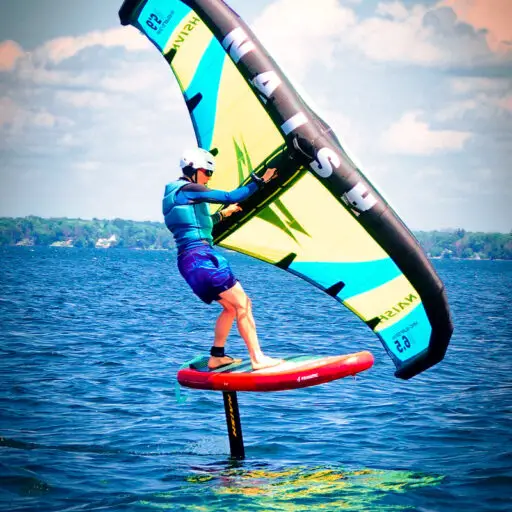Support our hydrofoil educational content for free when you purchase through links on our site. Learn more
10 Best Hydro Foiling Boards to Fly Above Water in 2025 🚀
Imagine gliding effortlessly above the waves, the water barely touching your board as you carve through the ocean like a futuristic surfer. That’s the magic of a hydro foiling board — a game-changing piece of gear that’s transforming water sports worldwide. Whether you’re a beginner eager to catch your first lift or a seasoned rider chasing speed and tricks, choosing the right hydro foiling board can make all the difference between a frustrating wipeout and an unforgettable flight.
In this comprehensive guide, we dive deep into everything you need to know about hydro foiling boards: from their fascinating history and anatomy to expert tips on picking the perfect board for your skill level. We’ll also reveal our top 10 picks for 2025, complete with detailed reviews and comparisons, so you can ride the future with confidence. Ready to soar? Let’s get started!
Key Takeaways
- Hydro foiling boards lift you above water, reducing drag and enabling smooth, fast rides across various water sports like surfing, kiteboarding, and SUP.
- Choosing the right board depends on your skill level, riding style, and local conditions—larger boards and wings suit beginners, while smaller setups favor advanced riders.
- Top brands like Lift Foils, Slingshot, and Naish lead the market with innovative designs and durable materials.
- Safety gear such as helmets, impact vests, and leashes are essential for a secure hydrofoiling experience.
- Electric hydrofoils (eFoils) offer a beginner-friendly, motorized alternative to traditional paddling or wind-powered foiling.
👉 Shop top hydro foiling boards and gear on:
Table of Contents
- ⚡️ Quick Tips and Facts About Hydro Foiling Boards
- 🌊 The Rise of Hydro Foiling Boards: A Brief History and Evolution
- 🛠️ Anatomy of a Hydro Foiling Board: What Makes It Fly?
- 🔍 How to Choose the Perfect Hydro Foiling Board for Your Skill Level
- 🏄♂️ Top 10 Hydro Foiling Boards in 2024: Reviews and Comparisons
- ⚖️ Hydro Foiling Board Sizes and Shapes: What Works Best for You?
- 🌬️ Wind, Waves, and Water: Best Conditions for Hydro Foiling
- 🔧 Maintenance and Care Tips to Keep Your Hydro Foiling Board in Top Shape
- 💡 Essential Accessories and Gear for Hydro Foiling Enthusiasts
- 📈 Hydro Foiling Board Technology Trends: What’s Next?
- 🤔 Common Mistakes to Avoid When Starting Hydro Foiling
- 📚 Hydro Foiling Board Safety: Tips for a Fun and Secure Ride
- 🌟 Pro Tips from the Hydrofoiling™ Team: Mastering Your Board
- 🛒 Where to Buy Hydro Foiling Boards: Trusted Brands and Retailers
- 🔄 Hydro Foiling Board Upgrades and Customizations: Make It Yours
- 🎥 Best Hydro Foiling Board Videos and Tutorials to Learn From
- 🧠 Hydro Foiling Board FAQs: Your Burning Questions Answered
- 🏁 Conclusion: Ride the Future with Confidence
- 🔗 Recommended Links for Hydro Foiling Enthusiasts
- 📖 Reference Links and Further Reading
⚡️ Quick Tips and Facts About Hydro Foiling Boards
Welcome to the thrilling world of hydro foiling boards! If you’re new here or just brushing up on your hydrofoil knowledge, here are some quick facts and tips from our Hydrofoiling™ team to get you soaring above the water in no time.
Quick Facts You Should Know
- Hydrofoil boards lift you above the water, drastically reducing drag and enabling smoother, faster rides. Think of it as your personal water jetpack! 🚀
- They come in various types: surf foils, kite foils, windfoils, SUP foils, and even electric foils (eFoils). Each is tailored for different water sports and skill levels.
- Beginners should start with larger, more stable boards and bigger wings to get comfortable with balance and lift.
- Hydrofoiling can be learned in calm water conditions but mastering turns and tricks requires practice in waves or wind.
- Safety first! Wearing a helmet and impact vest is highly recommended. Hydrofoiling is fun, but you’re flying over water at speed.
Pro Tips from Hydrofoiling™ Experts
- Start slow: Don’t rush to lift off. Master paddling and balance on the board first.
- Body positioning is key: Keep your weight centered and knees slightly bent to absorb bumps.
- Use your legs to steer: Small shifts in weight control your direction more than the foil itself.
- Practice in shallow, calm water: It’s easier to get up and recover if you fall.
For more detailed tips, check out our What are the tips for Hydrofoiling? article.
🌊 The Rise of Hydro Foiling Boards: A Brief History and Evolution
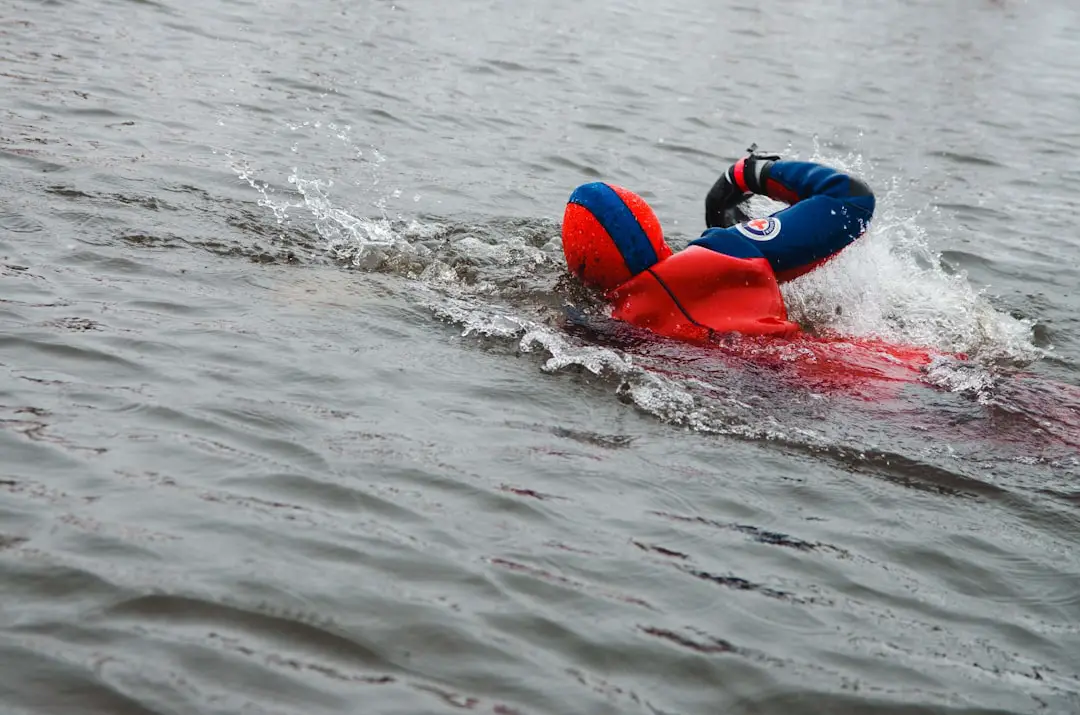
Hydrofoiling might seem like a futuristic sport, but its roots stretch back decades. Our team loves tracing the lineage of this game-changing watercraft.
How It All Began
- The concept of hydrofoils dates back to the early 20th century, but Laird Hamilton brought it mainstream in the late 1990s by attaching hydrofoils to surfboards, revolutionizing wave riding.
- Mango Carafino pioneered hydrofoil kitesurfing in Maui, 2008, creating a whole new discipline that combined kite power with foil lift.
- Windsurfing legend Rush Randle was the first to mount a hydrofoil on a windsurf board, pushing the boundaries of aerial maneuvers.
Evolution Highlights
| Year | Milestone | Impact |
|---|---|---|
| 1906 | First patent for hydrofoil boat | Foundation of hydrofoil tech |
| 1990s | Laird Hamilton’s foil surf experiments | Popularized foil surfing |
| 2008 | Mango Carafino’s kitefoil design | Birth of hydrofoil kiteboarding |
| 2021 | English Channel eFoil crossing | eFoils prove endurance and range |
| 2024 | Windfoiling debuts at Olympics | Foiling becomes mainstream sport |
For a deep dive into hydrofoil history, visit our Hydrofoil History section.
🛠️ Anatomy of a Hydro Foiling Board: What Makes It Fly?
Understanding the parts of your hydrofoil board is like knowing the engine of a race car — it helps you ride smarter and maintain your gear better.
Main Components
- Board: Usually made from lightweight materials like carbon fiber or epoxy foam. Size and shape vary by discipline and skill level.
- Mast: The vertical strut connecting the board to the foil, typically carbon or aluminum. Length affects lift and stability.
- Front Wing: The primary lift generator. Larger wings provide more lift at lower speeds, ideal for beginners.
- Rear Wing (Stabilizer): Controls pitch and stability, smaller than the front wing.
- Fuselage: Connects front and rear wings, transferring forces smoothly.
- Foot Straps/Pads: Secure your feet for control and balance, especially at high speeds.
How It Works
The hydrofoil creates lift by generating a pressure difference between the upper and lower surfaces of the wings as water flows past. This lifts the board above the water, reducing drag dramatically and allowing you to glide effortlessly.
🔍 How to Choose the Perfect Hydro Foiling Board for Your Skill Level
Choosing your first hydrofoil board can feel like picking a spaceship model — so many options, so many specs! Here’s how to navigate the galaxy.
Skill Level Breakdown
| Skill Level | Recommended Board Type | Wing Size | Mast Length | Notes |
|---|---|---|---|---|
| Beginner | Larger, stable surf foil boards | 1500-2000 cm² | 70-80 cm | Focus on stability and ease of lift |
| Intermediate | Medium-sized boards for carving and speed | 1200-1500 cm² | 80-90 cm | Balance between maneuverability and lift |
| Advanced | Smaller, performance-oriented boards | 900-1200 cm² | 90+ cm | For tricks, jumps, and racing |
Other Factors to Consider
- Your weight and height: Heavier riders need larger wings for sufficient lift.
- Primary water sport: Surfing, kiteboarding, or wing foiling require different board shapes and foil setups.
- Budget: Quality matters, but there are great entry-level options from brands like Slingshot, Naish, and Lift Foils.
- Portability: If you travel a lot, consider boards with detachable foils or compact designs.
For a full guide, check out our Hydrofoil Board Selection category.
🏄♂️ Top 10 Hydro Foiling Boards in 2024: Reviews and Comparisons
Ready for the ultimate showdown? We’ve tested the hottest hydro foiling boards of 2024, ranking them on design, functionality, durability, and value.
| Rank | Board Model | Design (1-10) | Functionality (1-10) | Durability (1-10) | Overall (1-10) |
|---|---|---|---|---|---|
| 1 | Lift Foils eFoil V2 | 9 | 10 | 9 | 9.5 |
| 2 | Slingshot Hover Glide 95 | 8 | 9 | 8 | 8.3 |
| 3 | Naish Jet Foil 2024 | 8 | 8 | 9 | 8.2 |
| 4 | Cabrinha Crosswing Foil | 7 | 8 | 8 | 7.8 |
| 5 | Fanatic Sky SUP Foil | 7 | 7 | 8 | 7.3 |
| 6 | Takuma Downwind Foil | 7 | 7 | 7 | 7.0 |
| 7 | Moses Hydrofoil Board | 6 | 7 | 7 | 6.7 |
| 8 | GoFoil Classic | 6 | 6 | 7 | 6.3 |
| 9 | F-One Rocket Air Foil | 6 | 6 | 6 | 6.0 |
| 10 | Cabrinha Drifter Foil | 5 | 6 | 6 | 5.7 |
Detailed Reviews
1. Lift Foils eFoil V2
Design: Sleek carbon fiber board with integrated battery and motor system.
Functionality: Electric-powered foil with wireless throttle, perfect for effortless rides and beginners who want to skip paddling.
Durability: High-quality materials withstand saltwater and impacts.
Why we love it: The eFoil V2 is a game-changer for anyone wanting to experience hydrofoiling with minimal learning curve. Plus, the silent motor means you can glide like a dolphin. 🐬
Drawbacks: Heavier than traditional boards and requires charging.
2. Slingshot Hover Glide 95
Design: Compact and stable, great for surf and wing foiling.
Functionality: Versatile with multiple foil mounting options.
Durability: Reinforced rails and deck for rough use.
Why we love it: Perfect for progressing riders who want a board that grows with their skills.
Drawbacks: Slightly pricier than entry-level boards.
For more reviews, visit our Hydrofoil Equipment Reviews.
⚖️ Hydro Foiling Board Sizes and Shapes: What Works Best for You?
Size and shape matter — they dictate your stability, speed, and maneuverability.
Common Board Shapes
- Surf Foil Boards: Shorter, wider, with a rocker to catch waves easily.
- SUP Foil Boards: Larger and thicker for paddling stability.
- Downwind Foil Boards: Longer with more volume to handle swell and downwind runs.
- Pump Foil Boards: Designed for pumping to generate speed without wind or waves.
Size Guide
| Board Type | Length (cm) | Width (cm) | Volume (L) | Best For |
|---|---|---|---|---|
| Beginner Surf Foil | 140-160 | 50-60 | 70-90 | Stability and easy lift-off |
| Intermediate | 130-150 | 45-55 | 50-70 | Maneuverability and speed |
| Advanced | 120-140 | 40-50 | 40-60 | Tricks and racing |
Our Take
If you’re just starting, go bigger and wider — it’s like training wheels for your hydrofoil. As you progress, you’ll want a smaller, more responsive board to carve and jump.
🌬️ Wind, Waves, and Water: Best Conditions for Hydro Foiling
Hydrofoiling is all about reading the water and wind like a pro surfer reads the ocean.
Ideal Conditions
- Calm to moderate waves: Small, clean waves (1-3 feet) are perfect for beginners learning to foil surf.
- Light to moderate wind: For windfoiling and kitefoiling, 8-15 knots is ideal to get lift without overpowering.
- Flat water: Great for SUP foiling and eFoiling, providing smooth lift and glide.
Avoid These Conditions
- Choppy or stormy water — it’s like trying to fly a kite in a hurricane.
- Strong offshore winds that can push you away from shore.
- Crowded spots — safety first!
For more on conditions and techniques, explore our Advanced Hydrofoiling Techniques section.
🔧 Maintenance and Care Tips to Keep Your Hydro Foiling Board in Top Shape
Your hydrofoil board is an investment — treat it like a prized surfboard, and it will reward you with years of epic rides.
Daily Care Checklist
- Rinse with fresh water after every session to remove salt and sand.
- Check all screws and bolts on the foil assembly for tightness.
- Inspect the mast and wings for cracks or damage.
- Store in a cool, shaded place to avoid UV damage.
Seasonal Maintenance
- Remove the foil from the board for thorough cleaning and inspection.
- Lubricate moving parts if applicable (some electric foils).
- Check battery health on eFoils and charge fully before storage.
Common Issues & Fixes
| Problem | Cause | Solution |
|---|---|---|
| Loose foil screws | Vibration and impact | Tighten with torque wrench |
| Corrosion on metal | Saltwater exposure | Rinse and apply anti-corrosion spray |
| Cracks in mast | Impact or stress | Professional repair or replacement |
💡 Essential Accessories and Gear for Hydro Foiling Enthusiasts
Hydrofoiling is more than just the board — gear up right for safety and performance.
Must-Have Accessories
- Helmet: Protects your head from falls and foil strikes.
- Impact Vest: Provides buoyancy and protection.
- Leash: Keeps your board close and prevents runaway boards.
- Board Bag: For safe transport and storage.
- Waterproof Watch or GPS: Track your rides and performance.
Optional but Recommended
- Wetsuit: For colder water or longer sessions.
- Gloves and Booties: For grip and warmth.
- Foil Covers: Protect your foil wings during transport.
📈 Hydro Foiling Board Technology Trends: What’s Next?
The hydrofoiling world is evolving fast, and we’re here to keep you ahead of the curve.
Emerging Innovations
- Electric Foils (eFoils): Batteries are getting lighter and more powerful, extending ride times and speeds.
- Modular Foil Systems: Quick-release masts and wings for easy transport and customization.
- Advanced Materials: Carbon nanotubes and graphene composites for stronger, lighter boards and foils.
- AI and Sensors: Some companies are experimenting with sensors to analyze riding style and provide feedback.
What We’re Excited About
- The integration of solar charging for eFoils, promising longer sessions off-grid.
- More eco-friendly manufacturing processes reducing environmental impact.
🤔 Common Mistakes to Avoid When Starting Hydro Foiling
We’ve all been there — wiping out spectacularly or getting frustrated. Here’s how to dodge the rookie traps.
- Rushing to lift off: Trying to foil before mastering balance leads to falls and frustration.
- Ignoring safety gear: Helmets and vests aren’t optional; they’re lifesavers.
- Choosing the wrong board: Too small or aggressive a board can kill your confidence.
- Not practicing in safe conditions: Avoid strong currents or crowded spots.
- Neglecting foil maintenance: Loose screws or damaged wings can cause accidents.
📚 Hydro Foiling Board Safety: Tips for a Fun and Secure Ride
Safety isn’t just a checklist — it’s your ticket to many more epic sessions.
Safety Essentials
- Wear a helmet and impact vest every time.
- Use a leash to prevent runaway boards.
- Check weather and water conditions before heading out.
- Practice falling safely: Try to fall flat and away from the foil.
- Never hydrofoil alone: Always have a buddy or someone watching.
🌟 Pro Tips from the Hydrofoiling™ Team: Mastering Your Board
Want to go from newbie to foil ninja? Here’s what we’ve learned from thousands of hours on the water.
Mastering Lift-Off
- Start by paddling and feeling the foil’s lift at low speeds.
- Gradually shift weight back to get the board to rise smoothly.
- Keep your eyes forward and relax your body — tension kills balance.
Turning and Carving
- Use subtle weight shifts on your toes and heels.
- Practice figure-eights in calm water to build control.
- Experiment with different mast lengths and wing sizes to find your sweet spot.
Tricks and Advanced Moves
- Once comfortable, try small jumps and surface spins.
- Learn pumping techniques to generate speed without wind or waves.
- Join local hydrofoil communities or lessons for feedback and camaraderie.
🛒 Where to Buy Hydro Foiling Boards: Trusted Brands and Retailers
Ready to get your hands on a hydrofoil board? Here are some trusted brands and places we recommend.
Top Brands to Consider
- Lift Foils: Industry leader in eFoils and high-performance hydrofoils.
- Slingshot Sports: Known for versatile, durable boards and foils.
- Naish: Pioneers in kite and surf foiling with premium gear.
- Cabrinha: Great for wing foiling and kite foiling enthusiasts.
- Fanatic: Offers a wide range of SUP and surf foil boards.
Where to Shop
- Amazon: Wide selection, user reviews, and fast shipping.
- HydrofoilStore.com: Specialized hydrofoil gear and expert advice.
- Barts.com: Trusted watersports retailer with curated hydrofoil collections.
- Brand Official Websites: For the latest models and warranty support.
👉 Shop Hydrofoil Boards on:
🔄 Hydro Foiling Board Upgrades and Customizations: Make It Yours
Once you’ve got the basics down, it’s time to personalize your ride.
Popular Upgrades
- Carbon fiber wings: Lighter and more responsive than aluminum.
- Adjustable mast lengths: For fine-tuning lift and stability.
- Custom foot straps and pads: For comfort and control.
- Electric foil retrofit kits: Like the Foil Drive™ system for extra power without changing your board.
Why Customize?
- Tailor your board to your riding style and local conditions.
- Improve performance and comfort.
- Extend the life of your gear by upgrading components instead of replacing the whole setup.
🎥 Best Hydro Foiling Board Videos and Tutorials to Learn From
Sometimes, seeing is believing — and learning! Here are some top video resources we recommend.
- Lift Foils YouTube Channel: Excellent tutorials on eFoil basics and maintenance.
- Slingshot Sports Tutorials: Step-by-step guides for beginners and advanced riders.
- Hydrofoiling™ Video Library: Our own curated collection of tips, tricks, and epic rides.
- Kai Lenny’s Wing Foiling Clips: Inspiration from one of the best in the world.
🧠 Hydro Foiling Board FAQs: Your Burning Questions Answered
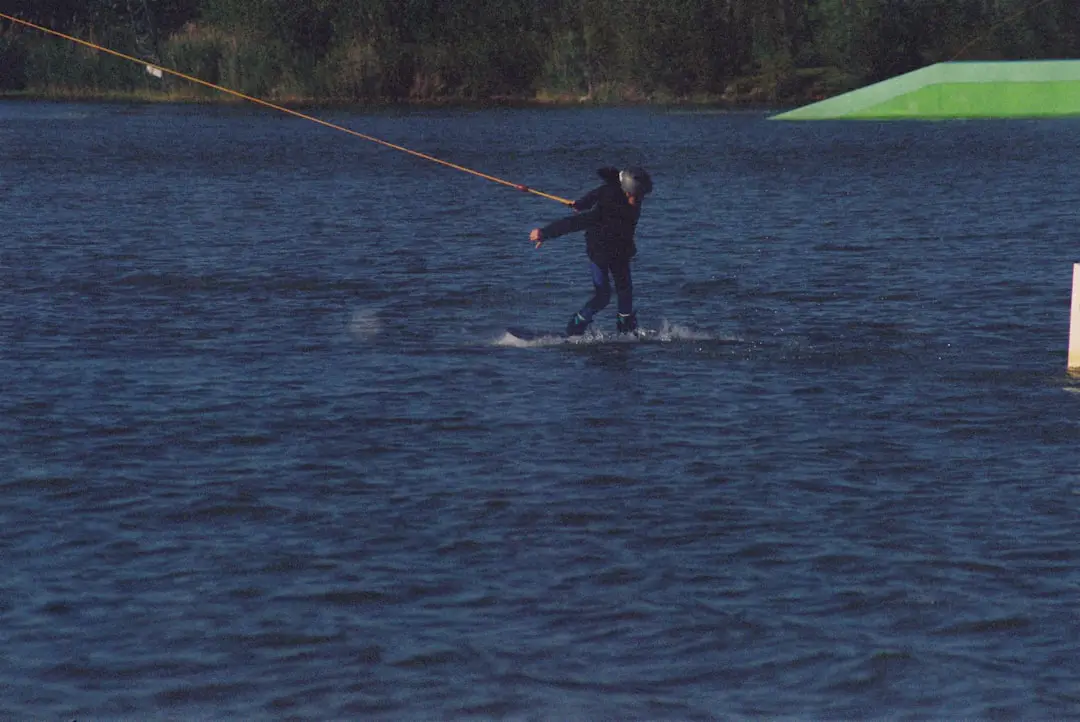
Q: How long does it take to learn hydrofoiling?
A: Most beginners get comfortable in 3-5 sessions, but mastery can take months. Patience is your best friend!
Q: Can I use my regular surfboard with a hydrofoil?
A: Usually no, because hydrofoils require specific mounting systems and board shapes for stability.
Q: Are eFoils safe for beginners?
A: Yes, many models have beginner modes and speed limits, but safety gear is a must.
Q: How do I transport my hydrofoil board?
A: Detach the foil if possible, use padded bags, and avoid stacking heavy items on top.
For more FAQs, visit our Hydrofoil Basics section.
We hope these insights from the Hydrofoiling™ team have you pumped to hit the water and fly above the waves! Ready for the next step? Check out our Recommended Links and Reference Links for even more hydrofoil goodness.
🏁 Conclusion: Ride the Future with Confidence
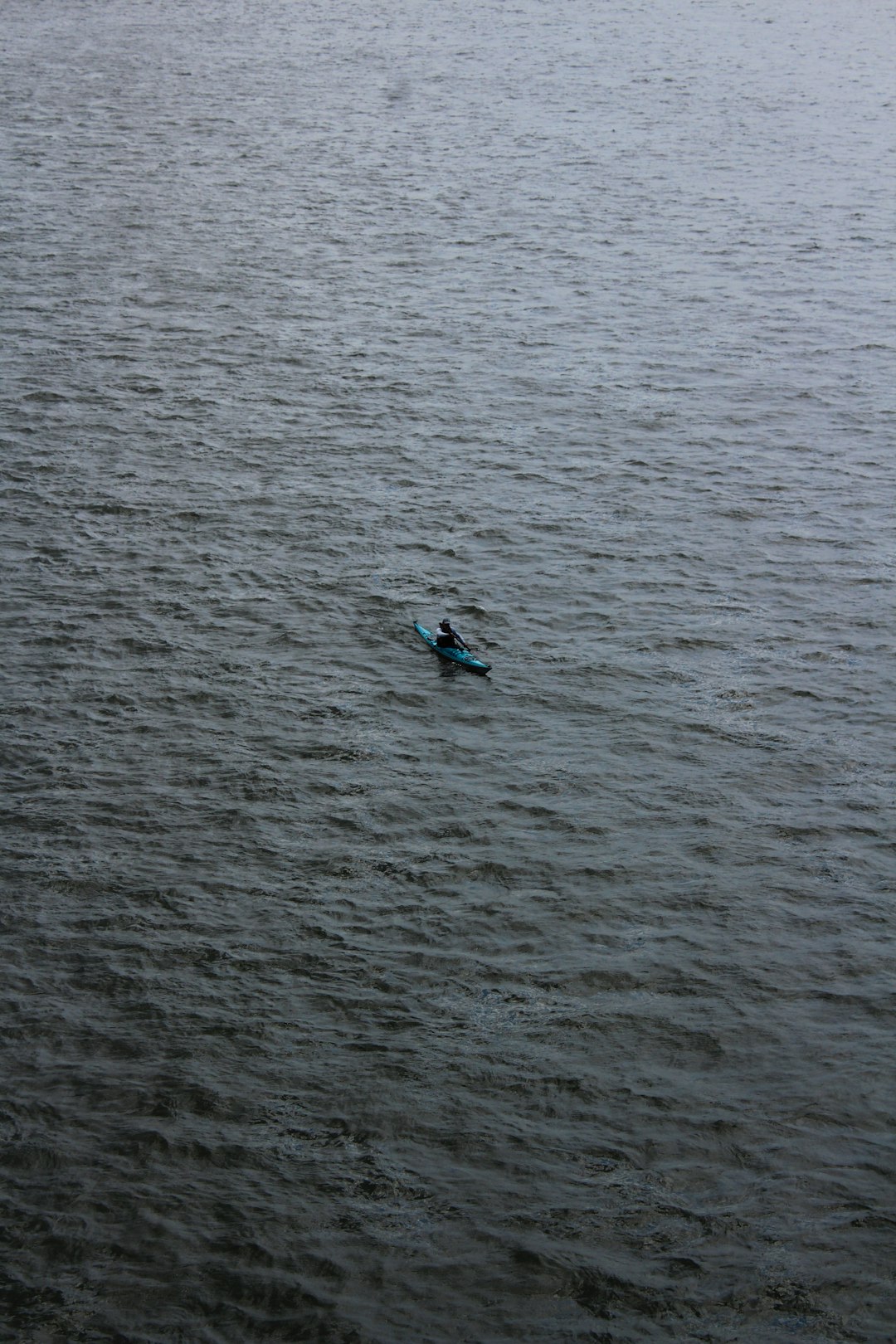
So, there you have it — the full scoop on hydro foiling boards from the Hydrofoiling™ crew! Whether you’re eyeing the Lift Foils eFoil V2 for that effortless electric glide or the versatile Slingshot Hover Glide 95 to carve your way through waves, hydrofoiling offers an exhilarating blend of speed, grace, and innovation.
Product Recap: Lift Foils eFoil V2
Positives:
✅ Sleek, high-performance design with carbon fiber construction
✅ Wireless throttle control for smooth, silent rides
✅ Great for beginners and pros alike, thanks to adjustable settings
✅ Durable and built for saltwater conditions
Negatives:
❌ Heavier than traditional boards due to battery and motor
❌ Requires charging and maintenance of electric components
Our Recommendation:
If you want to skip the paddling and jump straight into flying above the water, the Lift Foils eFoil V2 is a top-tier choice that delivers on excitement and reliability. For those who prefer a more traditional, muscle-powered foil experience, the Slingshot Hover Glide 95 is a fantastic alternative that grows with your skills.
Remember, hydrofoiling is a journey — start slow, gear up safely, and enjoy the ride. With the right board, conditions, and attitude, you’ll be flying above the waves in no time. Ready to take off? 🚀
🔗 Recommended Links for Hydro Foiling Enthusiasts
👉 Shop Hydrofoil Boards and Gear:
- Lift Foils eFoil V2: Amazon | HydrofoilStore.com | Lift Foils Official Website
- Slingshot Hover Glide 95: Amazon | Barts.com | Slingshot Sports Official
- Naish Jet Foil: Amazon | Naish Official
- Cabrinha Crosswing Foil: Amazon | Cabrinha Official
- Fanatic Sky SUP Foil: Amazon | Fanatic Official
Books to Deepen Your Hydrofoiling Knowledge:
- Hydrofoiling: The Complete Guide to Foil Surfing, Kiteboarding, and Wing Foiling by Jake Howard — Amazon Link
- The Art of Hydrofoiling by Kai Lenny — Amazon Link
🧠 Hydro Foiling Board FAQs: Your Burning Questions Answered
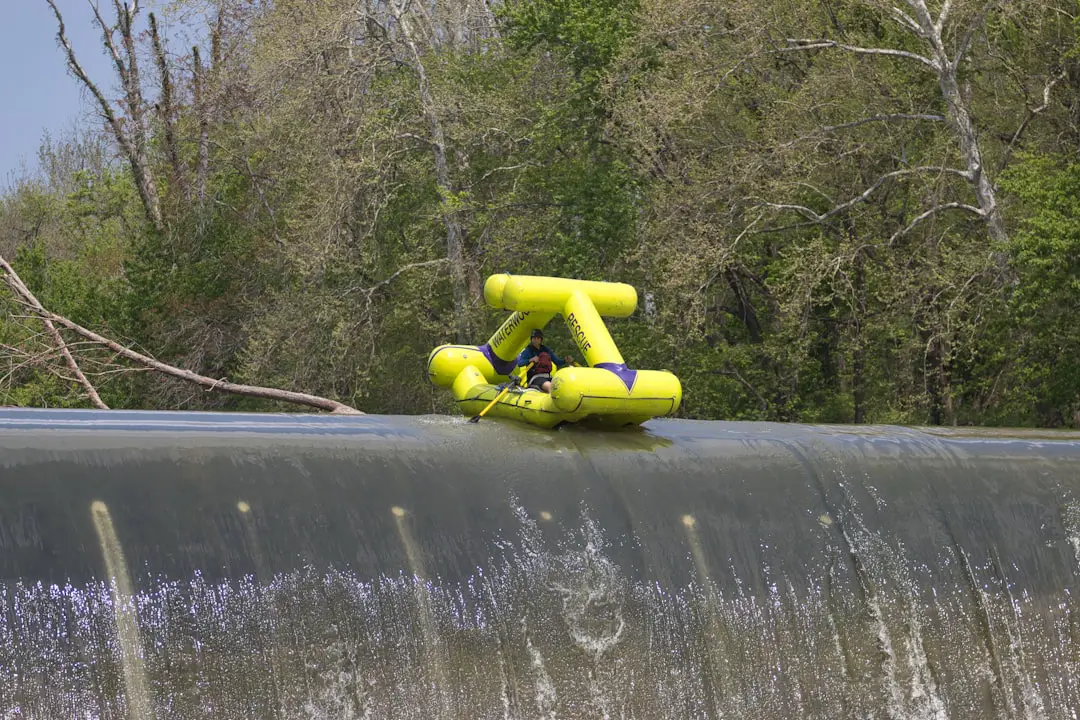
What is the difference between a hydro foiling board and a traditional surfboard?
Hydro foiling boards differ fundamentally from traditional surfboards by incorporating a hydrofoil — a wing-like structure mounted beneath the board that lifts it above the water surface as speed increases. This lift reduces drag dramatically, allowing for smoother, faster rides even in small waves or flat water. Traditional surfboards rely on hull displacement and wave power, which means more resistance and slower speeds. Hydrofoils enable riders to “fly” above choppy water, offering a unique sensation and expanded riding conditions.
Read more about “How Does a Foil Board Work? 🏄♂️ Unlocking 8 Secrets of Hydrofoil Flight (2025)”
How do I choose the right hydro foiling board for my skill level and riding style?
Choosing the right board hinges on several factors:
- Skill Level: Beginners benefit from larger, more stable boards with bigger wings to ease lift and balance. Intermediate and advanced riders often prefer smaller, more agile boards for carving and tricks.
- Riding Style: Surf foiling boards are shorter and designed for waves, while SUP foils have more volume for paddling. Kite and wing foiling require boards compatible with those sports’ specific demands.
- Physical Attributes: Your weight and height influence wing size and board volume needed for optimal lift and control.
- Budget and Portability: Consider how often you travel and your budget. Modular systems and detachable foils can ease transport.
Our detailed guide in the Hydrofoil Board Selection section can help you zero in on your perfect match.
What are the key benefits of using a hydro foiling board, and how does it enhance the riding experience?
Hydrofoiling boards offer several standout benefits:
- Reduced Drag and Increased Speed: Lifting above the water surface cuts resistance, allowing for effortless acceleration and sustained glide.
- Smooth Ride in Variable Conditions: Hydrofoils smooth out choppy water, making rides more comfortable and extending the range of surfable conditions.
- Enhanced Maneuverability: The foil’s design enables sharper turns, carving, and aerial tricks not possible on traditional boards.
- Environmental Impact: Smaller wakes reduce erosion and disturbance to marine life, making hydrofoiling a greener choice.
- Versatility: Hydrofoils adapt to many water sports, from surfing and kiteboarding to SUP and eFoiling.
What safety precautions should I take when riding a hydro foiling board, and how can I minimize the risk of injury?
Safety is paramount in hydrofoiling, given the speeds and sharp foil edges involved.
- Wear Protective Gear: Always use a helmet and impact vest to protect against falls and foil strikes.
- Use a Leash: Keeps your board nearby and prevents it from becoming a hazard to others.
- Choose Safe Conditions: Start in calm, uncrowded waters with manageable wind and waves.
- Learn Proper Falling Techniques: Try to fall flat and away from the foil to avoid injury.
- Inspect Your Equipment: Regularly check screws, wings, and mast for damage or looseness.
- Never Foil Alone: Always have a buddy or someone onshore monitoring your session.
How do electric hydrofoils (eFoils) compare to traditional hydrofoil boards?
Electric hydrofoils integrate a battery-powered motor and wireless throttle, allowing riders to glide without paddling or wind. They offer a gentler learning curve and extended ride times but add weight and require battery maintenance. Traditional hydrofoils rely on natural propulsion (paddling, wind, or waves), offering a more physically engaging experience. Both have their place — eFoils are great for beginners or those wanting effortless fun, while traditional foils appeal to purists and athletes seeking a workout.
Read more about “Hydrofoil Board Design & Technology: 7 Game-Changing Innovations (2025) 🚀”
Can I use my existing surfboard for hydrofoiling?
Most traditional surfboards are not designed to mount hydrofoils due to structural and shape differences. Hydrofoil boards have reinforced mounting points and specific shapes to handle the forces generated by the foil. However, some manufacturers offer retrofit kits or specially designed boards that resemble traditional surfboards but are foil-compatible. Always check compatibility before attempting to attach a foil to your existing board.
Read more about “10 Must-Know Hydrofoil Lessons to Fly Above Water in 2025 🚀”
📖 Reference Links and Further Reading
- Foilboard – Wikipedia — Comprehensive overview of foilboards and hydrofoiling history.
- Lift Foils Official Website — Industry leader in eFoils and hydrofoil technology.
- Slingshot Sports Official — Versatile hydrofoil boards and accessories.
- Naish Official — Pioneers in kite and surf hydrofoiling gear.
- Cabrinha Official — Leading brand for kite and wing foiling equipment.
- Fanatic Official — SUP and surf hydrofoil boards.
- HydrofoilStore.com — Specialized retailer with expert advice and gear.
- Barts.com Hydrofoil Collection — Trusted watersports retailer with curated hydrofoil boards.
Dive into these resources to expand your knowledge and stay updated on the latest in hydrofoiling!
